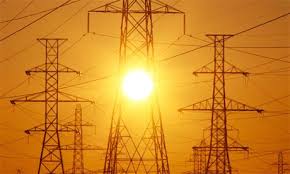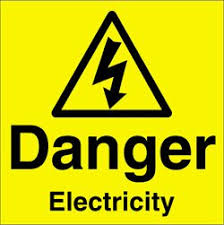 Source :Press Trust of India / New York November 15, 2011, 15:10 IST
Source :Press Trust of India / New York November 15, 2011, 15:10 IST
Hundreds of New York City Police officials raided Zuccotti park here, ground zero for the anti-Wall Street protests, ordering protesters to leave the area or court arrest.
However, New York mayor Michael Bloomberg's office urged the protesters to "temporarily" leave the area, saying they could return later.
"Occupants of Zuccotti should temporarily leave and remove tents and tarps. Protesters can return after the park is cleared," the office said on the micro-blogging website Twitter.
Police arrived in riot gear with helicopters hovering above the city's financial district in the wee hours today as it began its clampdown on the two month long protests against corporate greed.
Police spokesman Paul Browne said the city had issued fliers to the protesters saying the park would be cleared after 1 am (local time) tonight.
The flier said the city had decided "that the continued occupation of Zuccotti Park posed an increasing health and safety hazard to those camped in the park, the city's first responders and the surrounding community".
Protesters were giving minute by minute update of the police action on the Occupy Wall Street website with posts including 'NYPD reporter arrested', 'Occupiers who have been dispersed are regrouping at Foley Square', 'Press barred from entering Liberty Square', 'Pepper spray deployed -- reports of at least one reporter sprayed', 'Massive Police Presence', and 'Helicopters overhead'.
 Source : Live Mint:Utpal Bhaskar & Anup Roy: Tue, Nov 15 2011. 1:05 AM IST
The numbers point to the increasing possibility of a debt crisis in the Indian banking system.
Source : Live Mint:Utpal Bhaskar & Anup Roy: Tue, Nov 15 2011. 1:05 AM IST
The numbers point to the increasing possibility of a debt crisis in the Indian banking system.
While 60% of the loans were given by state-owned Rural Electrification Corp. Ltd and Power Finance Corp. Ltd (PFC), the rest have come from banks
The electricity distribution utilities of Tamil Nadu, Bihar and Punjab have loans worth Rs. 61,000 crore against their name and an aggregate net worth of a negative Rs. 34,000 crore.
 In all, distribution firms across India, most of which are owned by the states, owe a staggering Rs. 1.77 trillion.
In all, distribution firms across India, most of which are owned by the states, owe a staggering Rs. 1.77 trillion.
The numbers point to the increasing possibility of a debt crisis in the Indian banking system. While 60% of the loans were given by state-owned Rural Electrification Corp. Ltd and Power Finance Corp. Ltd (PFC), the rest have come from banks.
Although none of the loans have yet been classified as bad loans, or non-performing assets (NPAs), they are being closely tracked by banks.
According to a Mint analysis last week, the NPAs of 36 listed banks have risen 33% over the past year.
On Wednesday, citing concerns over asset quality, rating firm Moody’s downgraded the outlook on India’s Rs. 64 trillion banking sector to negative from stable.
State electricity boards (SEBs) are using the money to “meet their working capital requirements” despite taking them for “capacity addition”, said a senior government official, who did not want to be named.
According to PFC, Tamil Nadu’s distribution utility has loans of Rs. 32,000 crore on a net worth of a negative Rs. 22,700 crore, Rajasthan’s Rs. 32,800 crore on a net worth of Rs. 3,800 crore, Haryana’s Rs. 11,000 crore on a net worth of a negative Rs. 3,000 crore, Punjab’s Rs. 17,000 crore on a net worth of a negative Rs. 6,800 crore, and Bihar’s Rs. 12,000 crore on a net worth of a negative R 4,500 crore.
The fault isn’t that of the distribution utilities, said a PFC executive, who did not want to be named. “The responsibility lies with the state government,” he said.
No distribution utility has as yet approached the bank with a restructuring plan, said M. Narendra, chairman and managing director of Indian Overseas Bank.
Most Indian states are loath to charge adequately for electricity, especially that supplied to farmers, out of fear of antagonizing their voter base.
Many distribution utilities are saddled with losses arising from theft, inefficient transmission and billing inefficiencies. Some regularly buy expensive power to tide over short-term deficits, and many haven’t revised rates in years.
India has 73 distribution utilities, including a handful of private ones in states such as Delhi that have privatized electricity distribution.
The poor financial health of these distribution firms means they cannot raise money at all, or can do so only at very high interest rates.
Worse, since they are the main customers of power generation companies, there is a growing reluctance among both investors and financiers to invest in the latter.
Ideally, distribution companies “should be able to generate surplus and meet their obligations”, said India’s power secretary P. Uma Shankar. “A number of state governments are already taking steps to put in order the finances of their distribution companies.” That includes aligning tariffs, converting government loans into equity, increasing their liquidity and providing them with interest-free loans.
Thus far, distribution utilities have been able to service their loans, said Santosh Nair, deputy managing director (corporate banking) at State Bank of India (SBI).
Still, “while state electricity boards have not become NPAs yet, but they are showing some signs of stress and we may have to restructure” loans issued to some of them, he added.
SBI has an exposure of around Rs. 1,200 crore to distribution utilities and Rs. 9,000 crore in all to SEBs.
There is no “stress visible so far”, said M.D. Mallya, chairman, Indian Bank’s Association, and chairman and managing director of Bank of Baroda.
If banks aren’t worried it is because, as D. Sarkar, executive director of Allahabad Bank, puts it, the distribution companies are “backed by government guarantees”.
While that may be the case now, it is unlikely that distribution utilities will be able to continue to service debts as their losses increase.
 The cumulative losses of the distribution utilities are around Rs.75,000 crore, and if the present trend continues, their projected losses in 2014-15 will be Rs. 1.16 trillion, according to a study conducted by energy consulting company Mercados EMI Asiafor the 13th Finance Commission.
The cumulative losses of the distribution utilities are around Rs.75,000 crore, and if the present trend continues, their projected losses in 2014-15 will be Rs. 1.16 trillion, according to a study conducted by energy consulting company Mercados EMI Asiafor the 13th Finance Commission.
 Fitch Ratings on Monday said that losses at state power utilities could threaten fiscal consolidation in five Indian states—Rajasthan, Tamil Nadu, Madhya Pradesh, Uttar Pradesh and Bihar.
Fitch Ratings on Monday said that losses at state power utilities could threaten fiscal consolidation in five Indian states—Rajasthan, Tamil Nadu, Madhya Pradesh, Uttar Pradesh and Bihar.
“Losses in power distribution in these states exert additional pressure on state finances and it would be difficult for these states to achieve the fiscal consolidation targets established by the 13th Finance Commission,” said Devendra Kumar Pant, director in Fitch’s international public finance team.
 Source :HT Correspondent, Hindustan Times:New Delhi, November 14, 2011
Banks, which already have an exposure of over Rs 80,000 crore to airline majors, are shying away from providing any further financial assistance to the cash-starved sector. Jet Airways and SpiceJet also posted losses recently.
Source :HT Correspondent, Hindustan Times:New Delhi, November 14, 2011
Banks, which already have an exposure of over Rs 80,000 crore to airline majors, are shying away from providing any further financial assistance to the cash-starved sector. Jet Airways and SpiceJet also posted losses recently.
Banks have an exposure of Rs 43,000 crore to Air India,
Rs 13,000 to Jet and
Rs 7,000 crore to Kingfisher.
Banks are closely watching the performances of each of the loan accounts.
The gross non performing assets (NPAs) of public sector banks for the period ending March stood at Rs 71,047 crore.
The figure is set to significantly rise with several corporate loans turning bad.
"We are not in favour of providing any further loan to airline majors, especially in the private sector," a public sector bank chairman told HT.